Vietnamese driver's armor
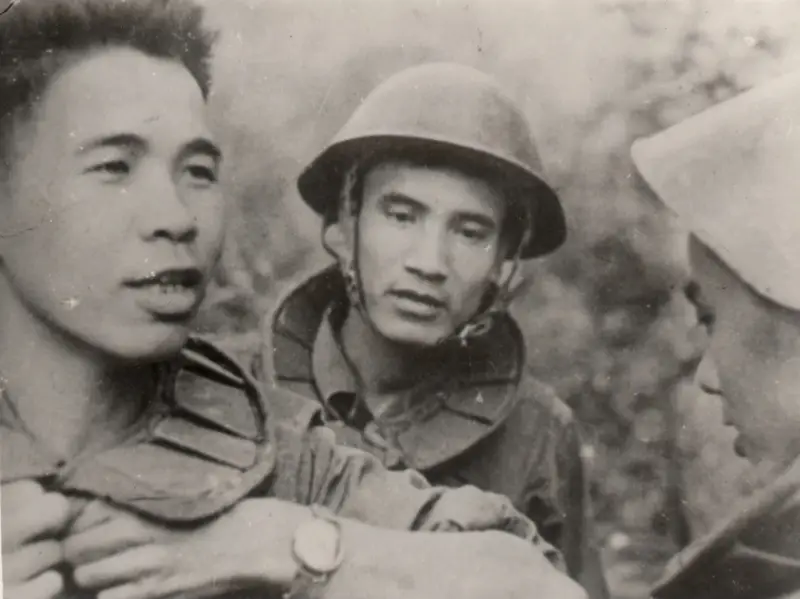
If we talk about personal armor protection equipment (hereinafter referred to as SIBZ) and the war in Vietnam, then what first comes to mind is the classic image of an American infantryman in unbuttoned armor and a steel helmet, which has become ingrained in the subconscious thanks to the all-powerful Hollywood and many American war films of various kinds. degree of quality. We don’t associate North Vietnamese soldiers with individual armor, literally at all. Meanwhile, the Vietnamese used body armor and helmets, and even quite en masse... True, it was far from the front. This happened on the so-called Ho Chi Minh Trail.
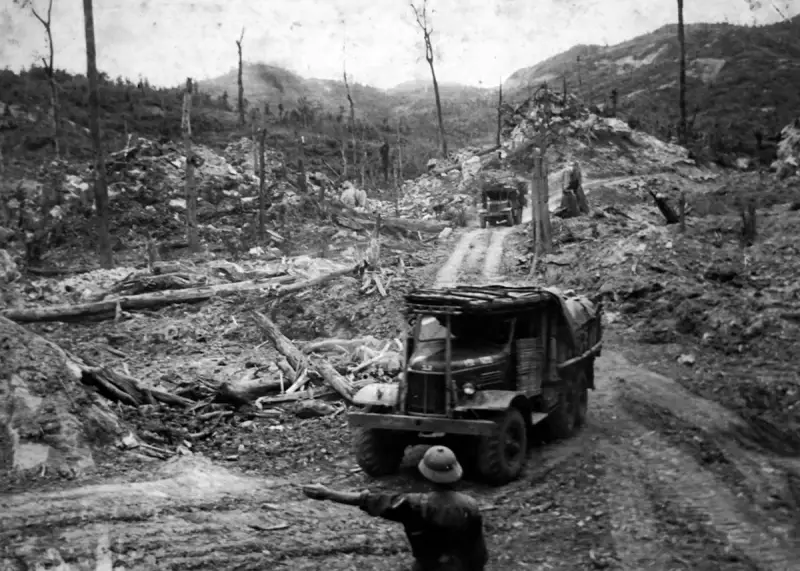
Soviet ZIL-157 on the Ho Chi Minh Trail.
The vehicles had special designs that visually changed the silhouette of the truck from the air (so that the cabin was not clearly outlined) and were also intended for attaching camouflage.
Such designs were first used by Chinese and Korean drivers during the Korean War. It can be seen that they tried to cover the vehicles with homemade bamboo “armor,” which often had a purely psychological effect. Well, here are the results of the work of landscape designers from the US Air Force. The volume of “cast iron” that fell on the trail every day was sometimes comparable in tonnage to the massive bombing of German industrial centers several decades earlier.
At the beginning of the conflict, namely the involvement of the Americans in it, the trail was a network of country roads and often real trails, along which sometimes only horse-drawn vehicles and bicycles could pass. And the Vietnamese simply weren’t very good at transport. For example, in 1965, along the entire route, the length of which with all branches, backups, passes and trails entering the territory of South Vietnam was more than 10 thousand kilometers, only 90 trucks operated.
Plus the course was a network of dirt roads and trails that were very exposed to weather conditions. Given the rainy season, certain sections of this, without exaggeration, “road of life” could be closed to cars for weeks and months.
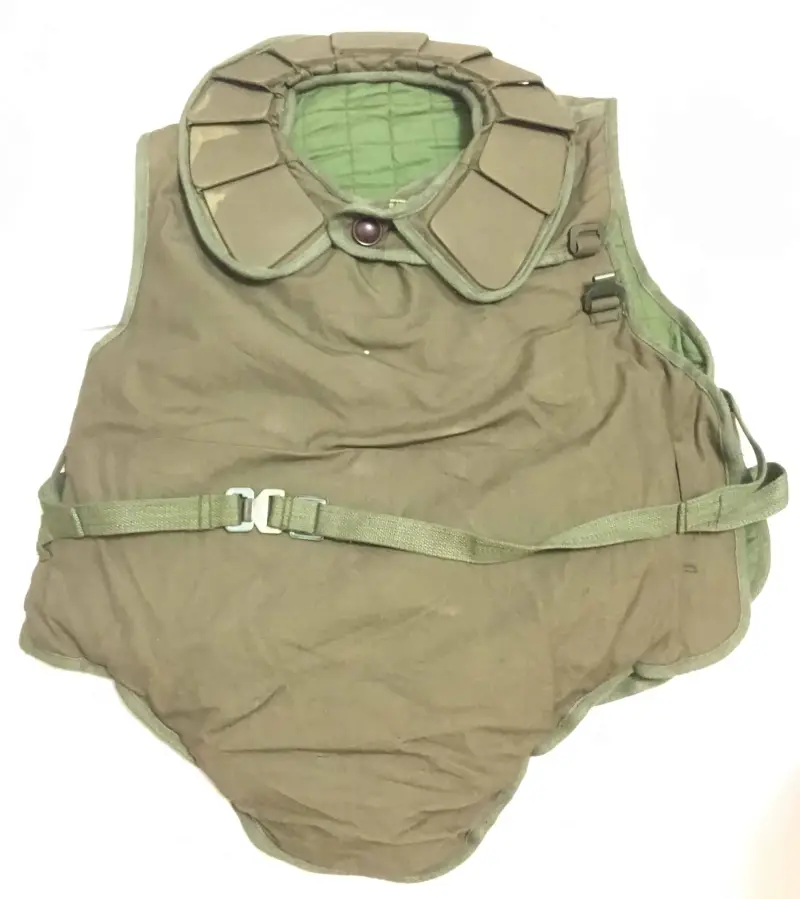
One of the variants of the Chinese body armor of the Vietnamese People's Army. Photo from the website of a Western antique salon. The price is quite humane, only 999 US dollars... not even a thousand.
But this was the case when the route appeared and in the first half of the 1960s. The track has evolved and improved constantly. At the peak of its capacity, the “trail” became a real route along which entire convoys walked, transporting tens of tons of cargo. Yes, this was not the case everywhere, and the route did not immediately become a real “highway,” but still. Moreover, the Vietnamese often found themselves one step ahead of the Americans. For example, when the Americans learned about the existence of a pipeline for pumping fuel along the route, several pipeline regiments of the Vietnamese People's Army were already operating there.
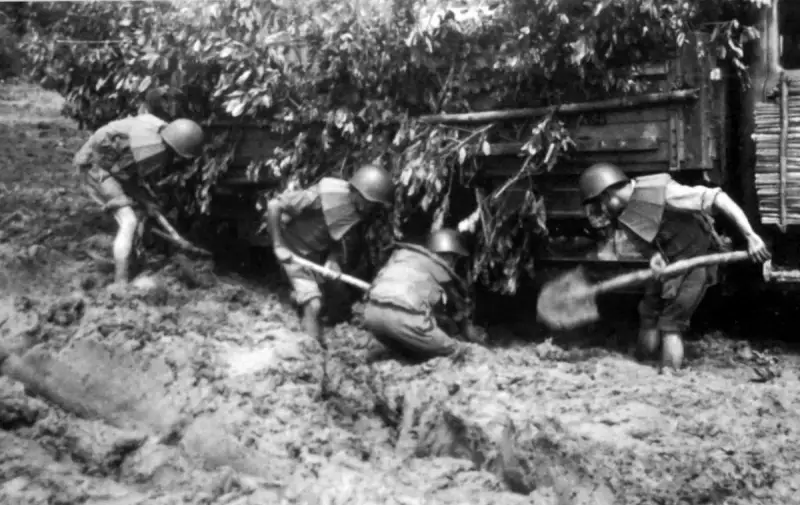
Soldiers of a transport company dig up a ZIL-130 on one of the sections of the highway during the rainy season, Ban Dong district, southern Laos, 1970. The fighters are seen wearing early type body armor with a large collar.
But the Americans, who perfectly understood the value of this transport artery for supplying both regular troops and partisans, tried as best they could to reduce its capacity. How? Basically they bombarded us with explosives... A lot and constantly.
Artillery, helicopters, and planes, often directed by special forces, were used; they worked along the route day and night. US Air Force and Navy aircraft were literally hovering over some sections of the route. For example, the joint operation of the US Air Force and Navy - Operation Tiger Hound, which began back in 1965, lasted several years, during which the route was almost constantly under attack from the American aviation.
Sometimes special forces directed them from the ground, even despite the fact that along the borders of South Vietnam the route passed through the territory of a neighboring state. It was a war, basically, without rules...
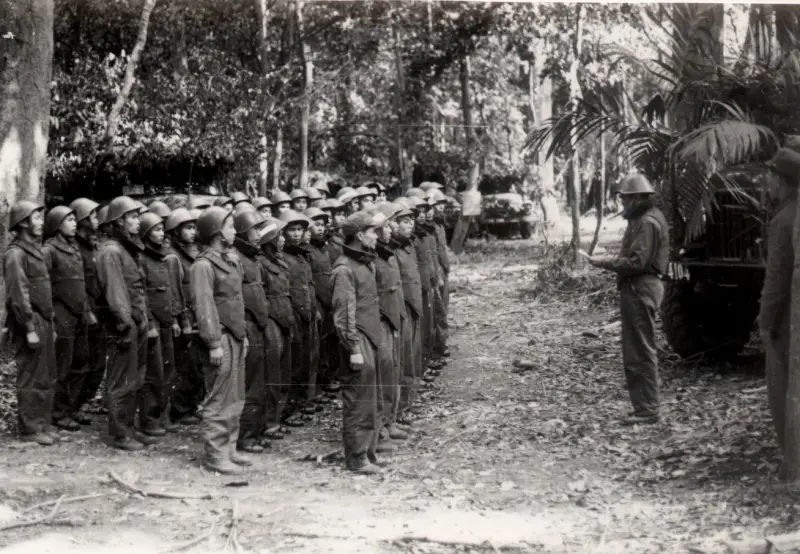
Formation of soldiers of the 13th Automobile Regiment, March 13, 1973. The photo was taken during a visit to the unit by General Vo Nguyen Giap. The soldiers are equipped with Chinese body armor and Soviet and East German-made helmets. Some helmets have white stripes for easy identification
The soldiers and military experts who worked on the route itself to ensure and improve it, naturally, suffered from constant fire from American aviation. And it was these unique personnel, worth their weight in gold, that it was decided to equip with SIBZ, a thing, frankly, rare in other parts of the North Vietnamese army.
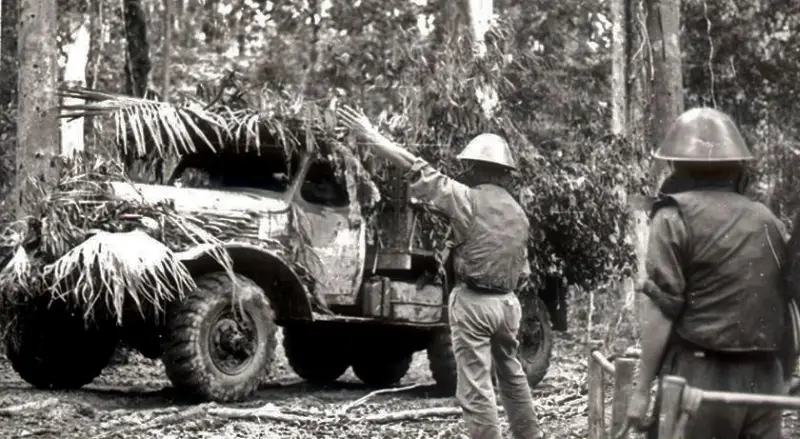
ZIL-157 goes on the road. The fighters are wearing Chinese body armor. The steel protective elements visible through the fabric are clearly visible.
The protective elements were steel plates in a “case” made of thick cotton fabric.
Body armor had at least two options. A feature of one type was a very large collar, which, if desired, could almost completely cover the fighter’s head. The bulletproof vests were produced in China and were equipped with the same fittings as the Chinese uniform and the famous “chikom” type 56.
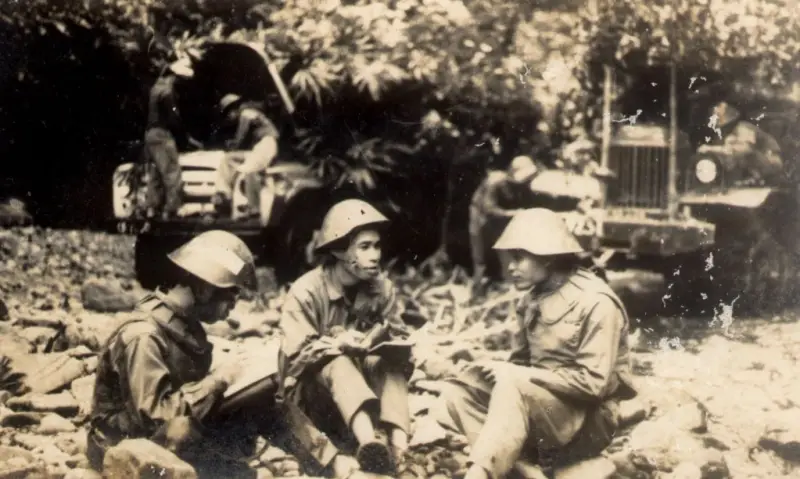
Statement of the combat mission in an amateur photo of the soldiers of the 13th regiment. GDR steel helmets and Chinese body armor on the fighters. In the background is materiel from the Likhachev plant.
In fact, it was not the body armor we are used to now, but a design closer to what the Americans called a flak vest. That is, individual armor protection designed to protect against fragments.
The term itself dates back to World War II, when the first bulletproof vests were introduced en masse into the American armed forces. They were intended for bomber crews suffering from fire from German anti-aircraft guns - Flugabwehrkanone, or simply FlaK, in fact, hence the name.
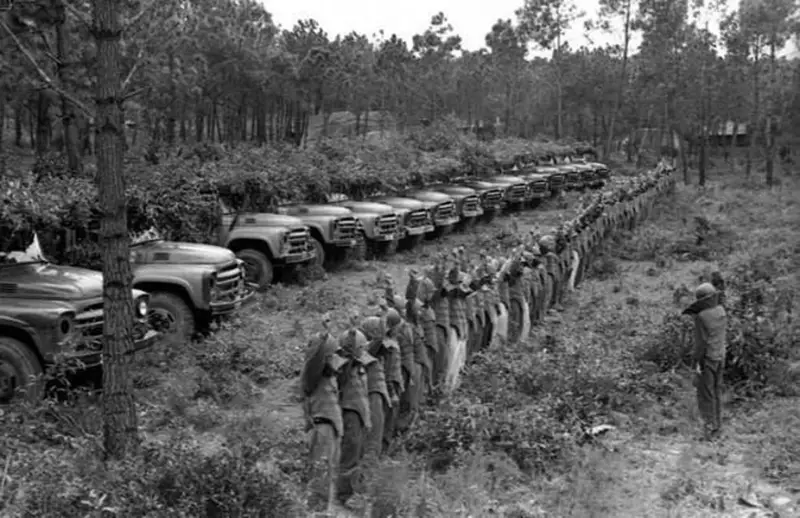
Construction of an autobat on ZIL-130. All fighters are wearing early body armor with a large collar.
Chinese body armor was supplied to individual transport companies of the North Vietnamese army operating on the Ho Chi Minh Trail. Moreover, all units were not equipped with them, but only those that operated in the most dangerous areas. That is, even in transport units on the “trail” they never became a widespread phenomenon.
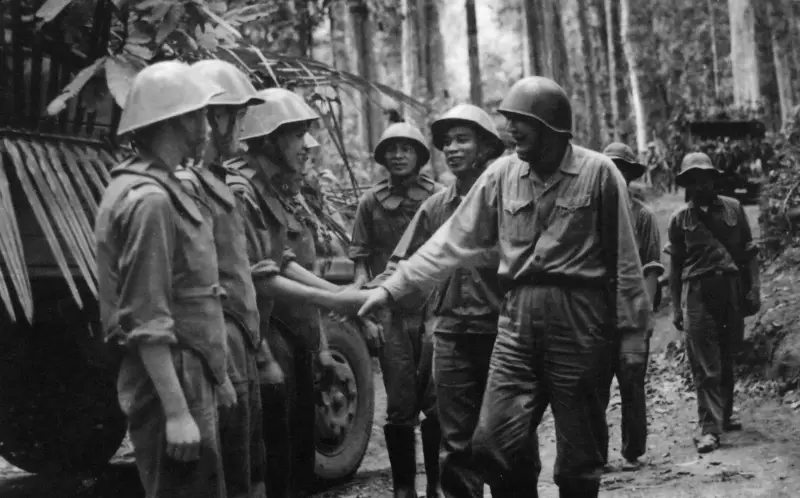
General Dong Shi Nguyen (in the center, in a Soviet steel helmet) visiting an automobile unit equipped with a ZIL-130. Dong Chi Nguyen led all operations on the “trail”, and it was under his leadership that victory in the logistical confrontation with the Americans was forged.
The decision in general is absolutely logical and understandable. Armor never became truly widespread; at the front it would have been a piecemeal phenomenon and would not have had an impact on the situation anyway. And here in the rear there are qualified and valuable personnel who suffer from American superior firepower. Why not protect them.
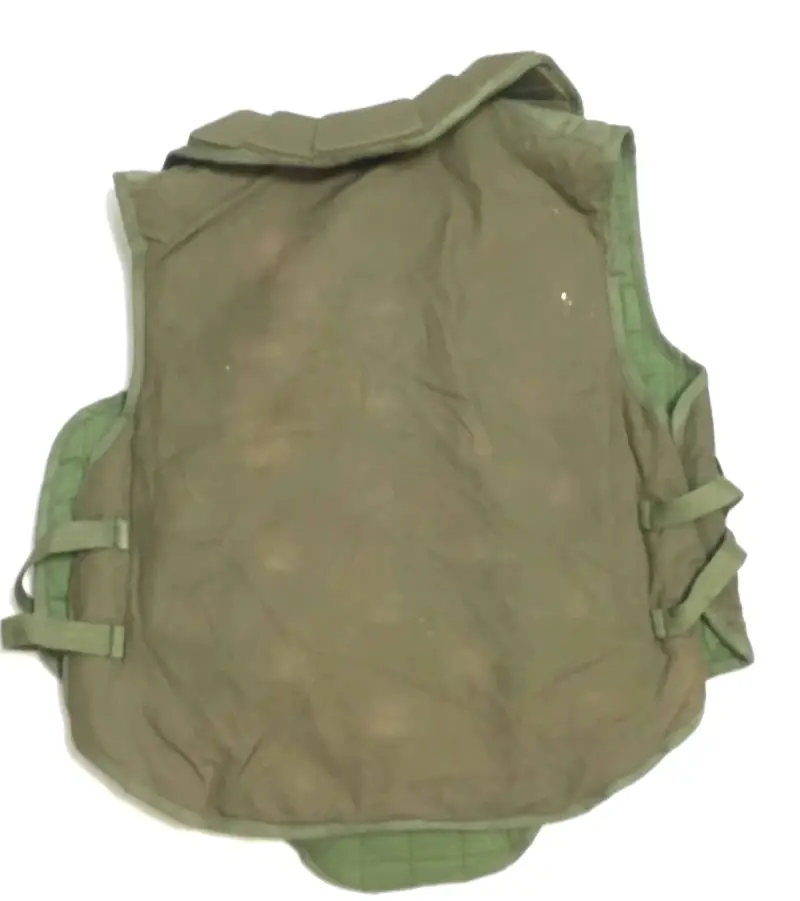
View of the body armor from the back.
Any war is a war of logistics. So it is not surprising that it was the Vietnamese who decided to protect with personal armor those who saddled the most difficult and dangerous Ho Chi Minh Trail.
As a result, this factor also became a drop in the common pot in which the victory was brewed, which was also achieved on the logistics front, but this, as usual, is a completely different matter story.
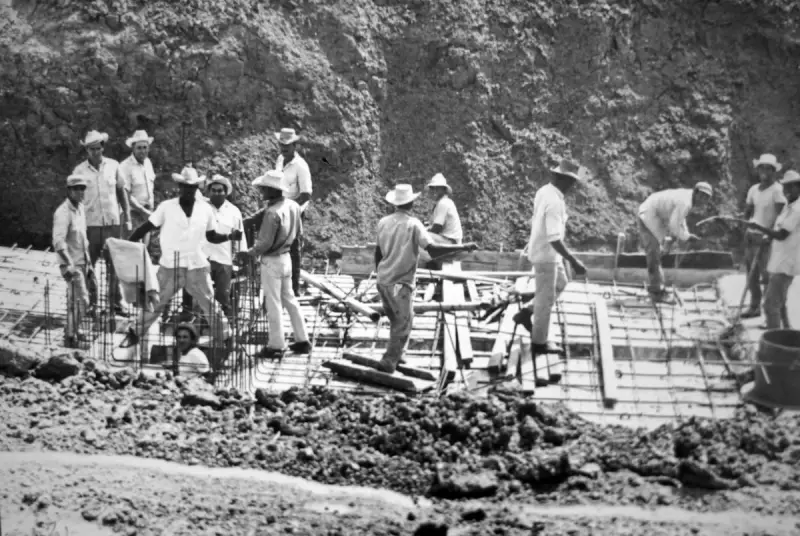
Not just the Vietnamese. Cuban workers and engineers at the construction site of one section of the Ho Chi Minh Trail, 1973.
Information